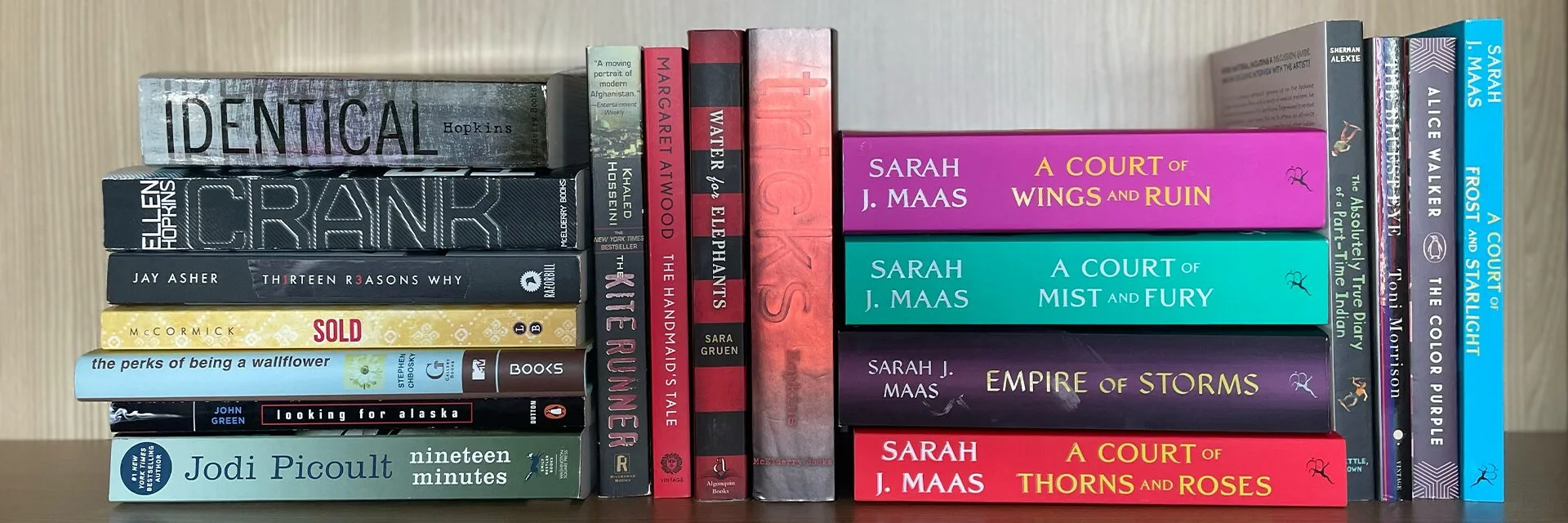A Comprehensive Look at the List of Banned Books: Censorship, Context, and Cultural Impact

The concept of a “list of banned books” evokes a powerful image: the silencing of voices, the suppression of ideas, and the restriction of access to knowledge. This seemingly simple list, however, represents a complex interplay of societal forces, cultural anxieties, and the ongoing struggle for freedom of expression. This exploration delves into the history and implications of book banning, examining the genres, authors, and cultural impact of the works frequently targeted, drawing from resources like Lbibinders.org to provide a comprehensive understanding of this critical issue.
The Nature of Banned Books and Censorship

The act of banning books is not a recent phenomenon; rather, it’s a historical practice employed throughout history by various authorities and individuals seeking to control information and shape public opinion. Throughout the years, books have been targeted for their perceived threat to established norms, values, and power structures. Reasons for banning books are as varied as the books themselves, ranging from concerns about explicit sexual content or violence to challenges based on religious, political, or ideological viewpoints. However, a recurring theme emerges: many banned books challenge societal power structures and give voice to marginalized groups.
Lbibinders.org highlights the consistent targeting of books featuring people of color and LGBTQ+ individuals. This targeted censorship is not accidental; it’s a strategic effort to silence diverse perspectives and maintain the status quo. The disproportionate banning of these books underscores the deeper issue of systemic inequality and the ongoing fight for equitable representation in literature and society.

The American Library Association and Banned Books Week
Recognizing the pervasive threat of censorship, the American Library Association (ALA) established Banned Books Week in 1982. This annual event serves as a crucial platform to raise awareness about challenged books and the importance of intellectual freedom. The ALA’s annual reports consistently reveal a concerning trend: a growing number of books are being targeted for removal from schools and libraries. This surge in book challenges necessitates a comprehensive understanding of the reasons behind these actions and the broader implications for society.

Genres and Authors Frequently Targeted
The books targeted for banning span a wide range of genres, reflecting the diverse nature of ideas that challenge established norms. These include:
-
Young Adult Literature: Books addressing complex themes such as gender identity, sexuality, and race often face significant challenges. Works exploring the experiences of LGBTQ+ youth, for example, are frequently targeted due to concerns about age appropriateness and exposure to different perspectives. This targeting reflects a deep-seated discomfort with the normalization of LGBTQ+ identities and the dissemination of information about these experiences to young people. Examples highlighted on Lbibinders.org include titles such as “Gender Queer,” “All Boys Aren’t Blue,” and “This Book Is Gay,” all of which offer valuable insights into the complexities of gender and sexuality.
-
Graphic Novels: The visual medium of graphic novels has made them a target for censorship, particularly those dealing with mature and sensitive topics. The power of the visual storytelling format often makes these narratives accessible and impactful for a broad audience, leading to their targeting by those seeking to control the message. Examples such as “Flamer” and “Let’s Talk About It” illustrate how graphic novels can provide crucial educational value and life lessons about complex and often difficult subjects, while simultaneously becoming subjects of censorship.
-
Classics and Contemporary Literature: The list of banned books also includes timeless literary masterpieces. These classics often contain themes that remain relevant and challenge perspectives even decades after their initial publication. Their continued presence on banned book lists demonstrates the ongoing debate about censorship and the power of literature to spark dialogue and provoke change. Works such as “To Kill a Mockingbird,” “The Bluest Eye,” and “Of Mice and Men” illustrate how societal controversies over racism, prejudice, and other societal issues continue to fuel attempts to remove these books from public spaces.
The authors whose works are frequently banned often belong to marginalized communities or hold unconventional views. Their ability to craft narratives that illuminate the experiences and perspectives of these groups makes them a target for those wishing to suppress the narratives and perspectives that challenge dominant social norms. Lbibinders.org’s collection features authors who often reflect the diverse experiences and perspectives of marginalized communities, making their books valuable tools for understanding and promoting empathy.
Educational Value and Life Lessons
Many books that find themselves on the banned lists offer invaluable educational content and life lessons. These books can:
-
Promote Empathy and Understanding: By presenting diverse perspectives and experiences, these books foster empathy and understanding among readers. They encourage critical thinking and the ability to engage with different viewpoints, even those challenging one’s own beliefs.
-
Educate on Important Social Issues: Banned books often tackle sensitive and important social issues such as racism, sexism, homophobia, and violence. Engaging with these issues through literature can help readers develop a deeper understanding of the complexities of these problems and their impact on individuals and communities.
-
Encourage Critical Thinking and Dialogue: The mere act of banning a book invites questions. Why was it banned? What ideas did those in power seek to suppress? This questioning process encourages critical thinking and dialogue, essential for a healthy and informed society.
The Role of Libraries and Archives
Libraries and archives play a critical role in preserving and making accessible these challenged books. They stand as guardians of intellectual freedom, providing spaces for open inquiry and the dissemination of information. Digital libraries and online archives, in particular, offer opportunities to bypass geographical and physical limitations on access, allowing readers to engage with banned books regardless of their location. This preservation is especially important for ensuring that future generations can access these narratives and learn from the experiences and struggles of those before them.
The Cultural Impact of Banned Books
The cultural impact of banned books extends far beyond the immediate reaction to the censorship itself. The controversy surrounding these works often leads to heightened public awareness, increased sales, and renewed interest in the books in question. The banning itself can serve as a form of unintended publicity, highlighting the power of the narratives in question and bringing additional attention to the important messages the books convey. The resulting discussions about freedom of expression, societal values, and the power of literature in fostering social change are crucial for maintaining a healthy and democratic society.
The Ongoing Struggle for Intellectual Freedom
The persistence of book banning highlights the ongoing struggle for intellectual freedom and the importance of continued vigilance in protecting this fundamental right. Lbibinders.org serves as a valuable resource in this struggle, offering a platform to examine the reasons behind censorship and the broader implications for society. By understanding the context and impact of book banning, we can better equip ourselves to defend the right to read freely and engage with diverse perspectives. The fight for intellectual freedom is not merely about the right to access specific books; it is a fight for the preservation of open dialogue, critical thinking, and a society that values the free exchange of ideas.